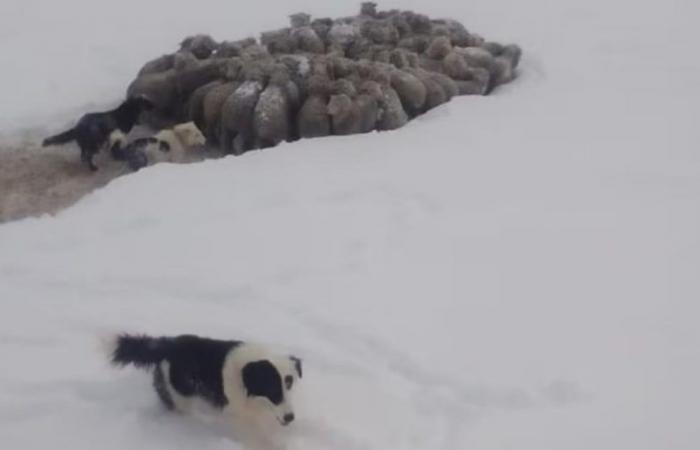The polar cold and intense snowfall put livestock activity in check in Argentine Patagonia. These are dramatic hours for cattle and sheep producer Sebastián Jamieson, who manages the Tapi-Aike Ranch and Cabin, located on National Route 40, south of El Calafate. Like many of the producers, he is suffering the consequences of the historic snowfalls that cover much of Argentine Patagonia.
Last week he was able to go look for and save weaning animals in a field 10 kilometers away from the center of his establishment.
But he has 400 Hereford mothers and 8,000 sheep 30 kilometers away and there is no way he can get there. “My hours are numbered. If I don’t access the farm in a week, they will all die,” he explained, according to Clarín Rural.
Sheep under the snow, south of El Calafate: dramatic story
“Herefords can handle anything, even too much snow. But sheep, with a metre of snow, are already too high and covered. They must have been stuck in a sector without eating for 15 days. This is a countdown.”
On how they are trying to reach that lot, Jamieson said: “We are trying everything. With tools, bulldozers and even the army came to help us. We were able to advance a few kilometers, but nothing more. A rancher who is closer went to another post, but he didn’t get there either. The snow reaches the horse’s belly and he can’t make long stretches.”
“Obviously we are prepared for the snowfall in July, of approximately 20-30 centimetres. But when it starts to snow in the first days of June and accumulating snow little by little is impossible. Now we are at 70 centimetres in the hull and in the high places where I have the nucleus of mothers, we are at more than a metre,” he commented.
Regarding how they are getting the feed for the farm that did reach the farm, the breeder said that “at a very high cost. We are bringing alfalfa from La Pampa through the province of Buenos Aires. Right now I have three teams of alfalfa on the way. There is one stranded in Trelew and the others are arriving at Piedra Buena. With that I have enough to keep them all, but it will be of no use if we cannot access the herd in the next few days.”
“What I need is access. If I can access the places where the farm is, I will save it. I have the fodder, I have the logistics, the people and everything, but I can’t get there. It’s awful. “I feel very helpless to be prepared to leave, to recover and not be able to access,” she said and concluded: “So, if they ask me for help, that’s it. Tools to be able to get there, like a bulldozer or something with tracks to be able to open paths and reach the farm.”
For his part, Enrique Jamieson, president of the Rural Society of Río Gallegos, of the Federation of Agricultural Institutions of Santa Cruz (FIAS) that integrates the Argentine Rural Confederations (CRA), said that “in this area the pastures are very large, 4,000 or 5,000 hectares. When everything is covered in snow, it is very difficult to get from one end to the other and save the cattle, or at least give them some survival rations. Water is very important, because everything froze.”
“You feel like letting your guard down, but the producers continue to fight against the snow, against everything to save the farm. The problem is that temperatures of 20 degrees are forecast and it is unlikely that there will be a quick thaw, because the days are short and the sun never appears,” he said.
According to the ruralist, the province has an approximate stock of 2 million sheep and 80,000 cattle. “Many sheep have already died and at least 50% of the total livestock in the province is at risk,” he added.
“It is an inexplicable level of desperation. You sleep because you have to sleep, but you can’t stop thinking about how to get to the hacienda. You get up, do everything possible and you don’t arrive. You become sad and discouraged.”he said with anguish.
Jamieson said they are receiving help from the provincial government and the army, but the work is very difficult and the hours are getting shorter because the animals are starving and the sheep are buried under the snow.
Extreme temperatures in Patagonia
In recent days, several locations in Patagonia suffered temperatures of -10°C in the city, but in the highest areas near the Andes Mountains and in open countryside, the minimum temperatures reached -23°C.
In addition, a red alert from the National Meteorological Service (SMN) is in effect for extreme temperatures for much of the south of Santa Cruz and a yellow alert until La Pampa, covering Río Negro and Chubut.


